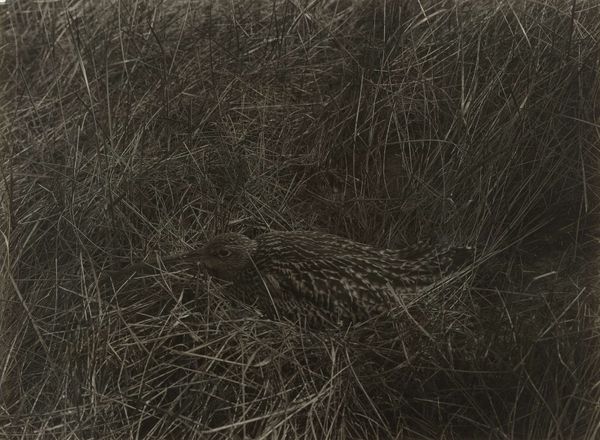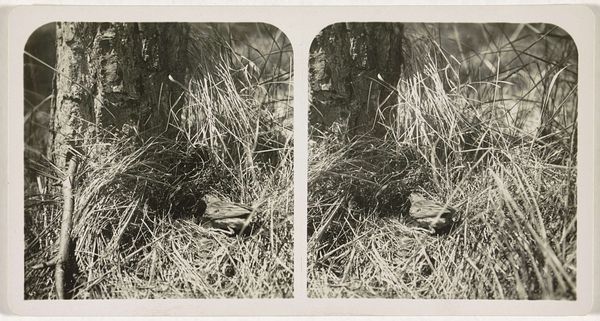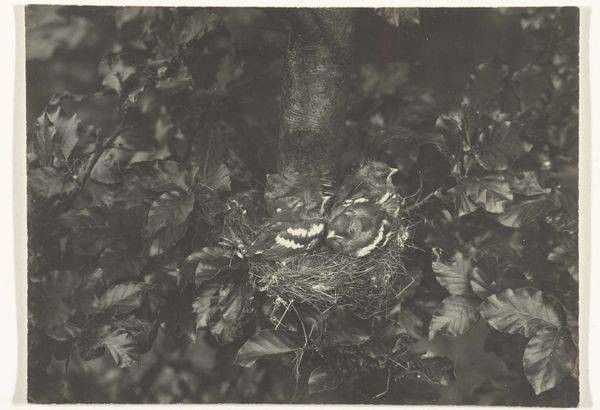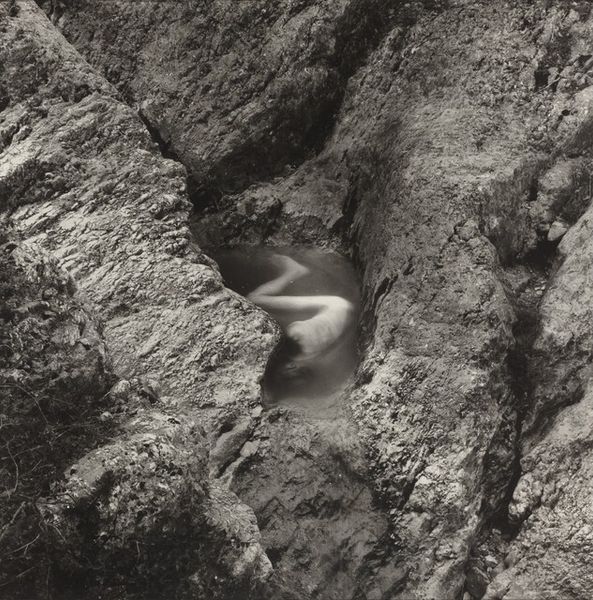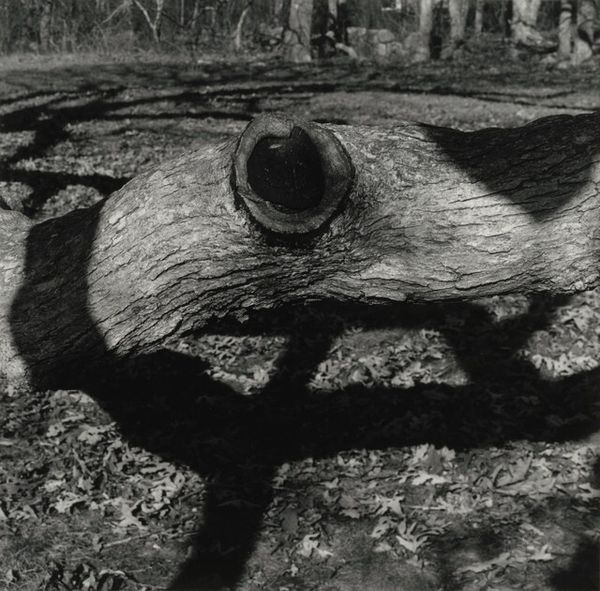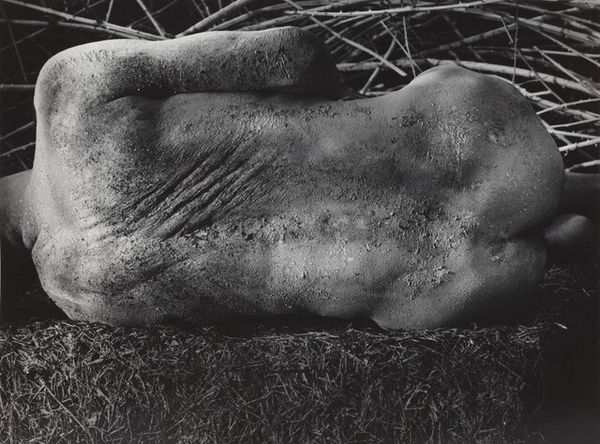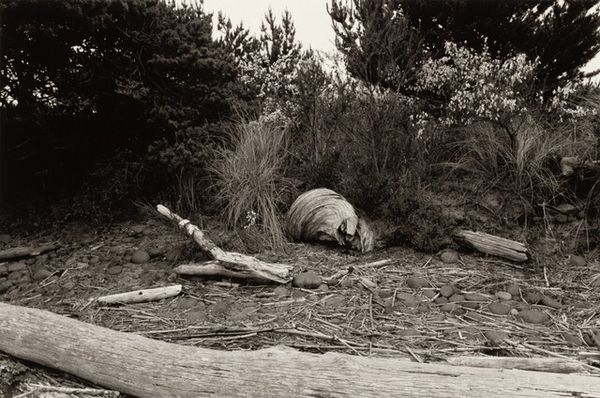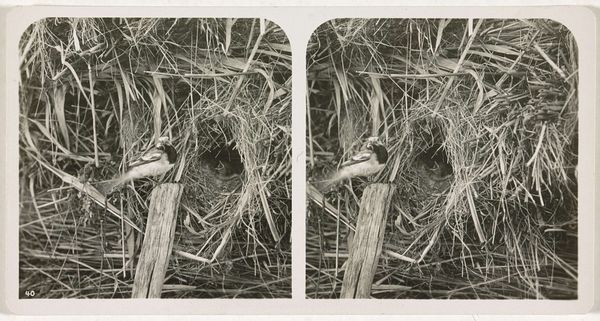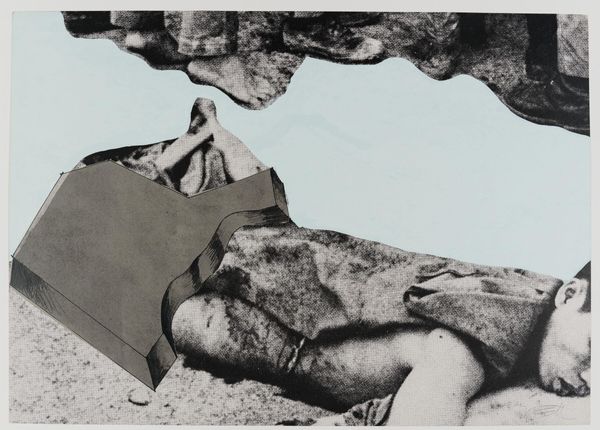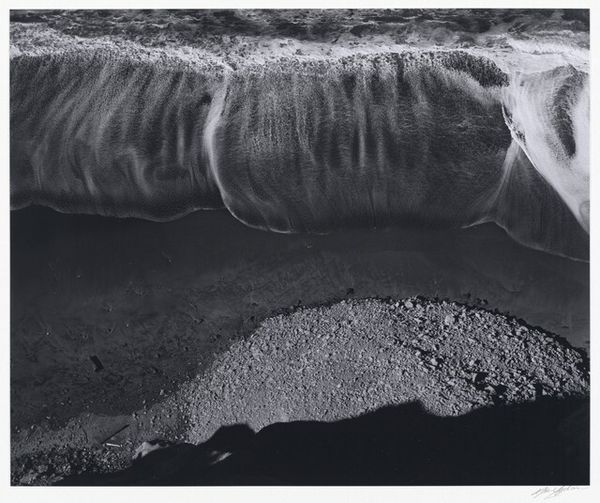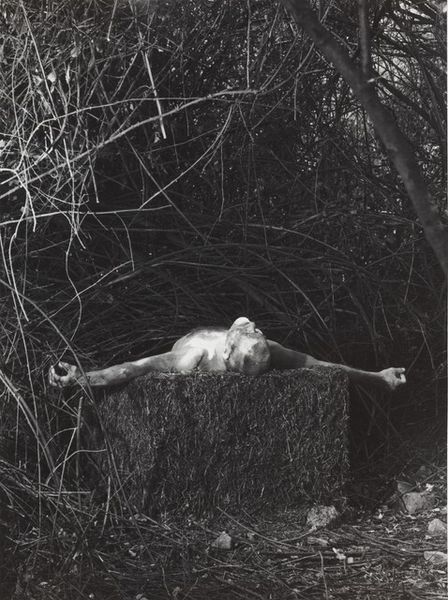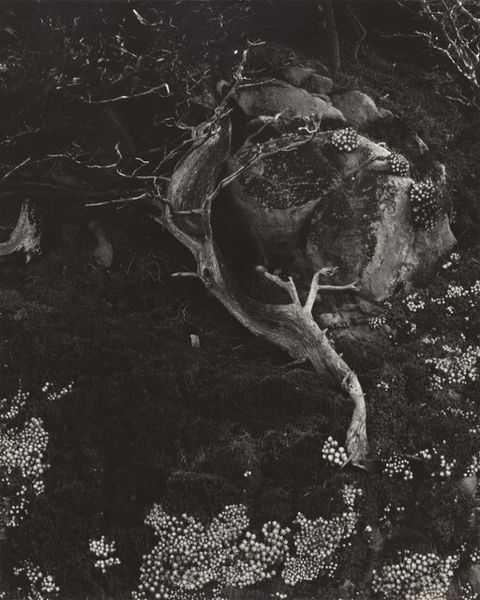
Dimensions: image: 29.3 x 39.5 cm (11 9/16 x 15 9/16 in.) sheet: 30.8 x 40.6 cm (12 1/8 x 16 in.)
Copyright: National Gallery of Art: CC0 1.0
Curator: This striking gelatin-silver print is titled "From 'Erinnerungsspur' (Memory's Trace)," created by Dieter Appelt in 1979. Editor: My initial impression is one of immense pressure. There’s this figure, buried or perhaps emerging, the stark monochrome adding to a feeling of claustrophobia and obscured identity. Curator: Appelt’s work often delves into themes of memory, trauma, and the body's relationship to history, and that context of historical and cultural traces informs this picture. He often employed unconventional photographic processes. Editor: The obscured face certainly amplifies this sense of loss and historical trauma. The monochromatic tones reduce any element of contemporary, perhaps suggesting an atemporal moment of being and reflecting more of the enduring impact of these past events, making it particularly potent. Are the branches above representative of these themes, in some way? Curator: Well, in thinking of modernism, this representation and engagement with monochrome might act as a bridge toward other visual tropes. For example, the artist frequently incorporated elements from performance art, as he has spoken about using the camera as a tool for documenting and engaging with the artistic process. It would not be out of place, here. The branches evoke, I would imagine, images of natural burial, so their representation underscores the subject matter in an obvious, but very raw way. Editor: True, the body seems almost unearthed or caught mid-transformation. It’s almost a visceral experience—this act of rediscovering something previously lost—or thought lost. I am not sure if modernism is enough, it feels, also, like a reflection on identity and impermanence. Do you think this work can resonate differently in a culture grappling with discussions of body politics and social justice? Curator: Undeniably, yes. The vulnerability inherent to this representation of the human form resonates powerfully with contemporary discussions of the body. We can draw parallels to current dialogues on trauma, marginalization, and the social factors impacting our understandings of history, but this piece transcends, somewhat, simple notions of these schools of thought, too. It transcends, yes? Editor: Absolutely, viewing "From 'Erinnerungsspur'," especially now, can incite reflection on our complex human past and our roles within a much larger historical narrative. It acts as a reminder of the stories we are trying to preserve and reclaim. Curator: Yes, through its unsettling imagery, Appelt's work urges us to examine what these memories leave us.
Comments
No comments
Be the first to comment and join the conversation on the ultimate creative platform.
